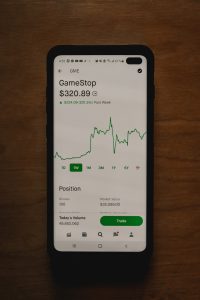Understanding the PDT Rule in Forex Trading: What You Need to Know
Forex trading offers an exciting opportunity for individuals to potentially earn substantial profits by speculating on the fluctuations of currency pairs. However, like any other financial market, forex trading is subject to certain regulations and rules that traders must adhere to. One such rule that traders need to understand is the PDT (Pattern Day Trading) rule. In this article, we will explore what the PDT rule is, why it exists, and how it affects forex traders.
What is the PDT Rule?
The PDT rule is a regulation implemented by the U.S. Securities and Exchange Commission (SEC) that applies to margin trading accounts. It states that if a trader executes four or more day trades within a rolling five business day period, and the total value of those day trades is more than 6% of the trader’s total trading activity during that period, they will be classified as a pattern day trader. Once classified as a pattern day trader, the trader must maintain a minimum account balance of $25,000 in order to continue day trading.
Why does the PDT Rule Exist?
The PDT rule was implemented to protect inexperienced traders from the risks associated with frequent day trading. Day trading involves the buying and selling of securities within the same trading day, with the goal of profiting from short-term price movements. It requires a high level of skill, experience, and discipline. Many novice traders are attracted to day trading due to the potential for quick profits, but they often lack the necessary knowledge and experience to consistently make profitable trades.
The PDT rule aims to ensure that traders have a sufficient amount of capital to absorb potential losses and mitigate the risks associated with day trading. By requiring a minimum account balance of $25,000, the rule aims to reduce the number of inexperienced traders who engage in excessive and risky day trading activities.
How does the PDT Rule Impact Forex Traders?
The PDT rule primarily impacts traders who operate in the U.S. and have a margin trading account. Forex trading, being an over-the-counter market, is not subject to the same regulations as stock trading. However, many forex brokers offer margin trading accounts that fall under the jurisdiction of the SEC. Therefore, if you are a forex trader in the U.S. and use a margin trading account, you will be subject to the PDT rule.
It is important to note that the PDT rule applies specifically to day trades. It does not include trades that are held overnight or longer-term positions. Therefore, if you engage in swing trading or position trading, you will not be affected by the PDT rule.
To determine whether you are classified as a pattern day trader, your broker will monitor your trading activity and calculate the number of day trades you have executed within the rolling five business day period. If you are classified as a pattern day trader, your broker will require you to maintain a minimum account balance of $25,000 to continue day trading. If your account balance falls below this threshold, your broker may restrict your ability to execute day trades.
It is important to understand that the PDT rule is enforced by brokers, not the SEC directly. Different brokers may have slightly different interpretations and implementations of the rule. Therefore, it is crucial to familiarize yourself with your broker’s specific policies regarding the PDT rule.
Conclusion
The PDT rule is an important regulation that forex traders need to be aware of, especially if they operate in the U.S. and use a margin trading account. While the rule may seem restrictive, it is designed to protect traders and ensure they have the necessary capital to engage in day trading activities. By understanding and adhering to the PDT rule, traders can navigate the forex market responsibly and minimize the risks associated with excessive day trading.






